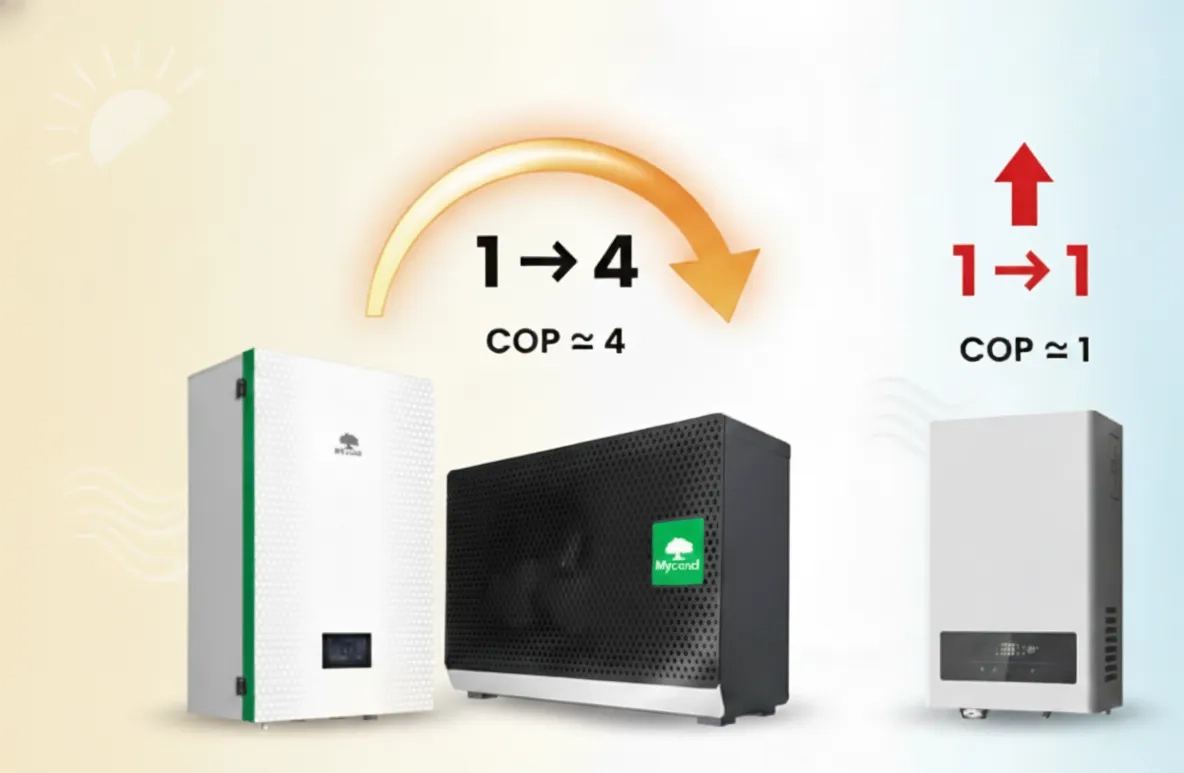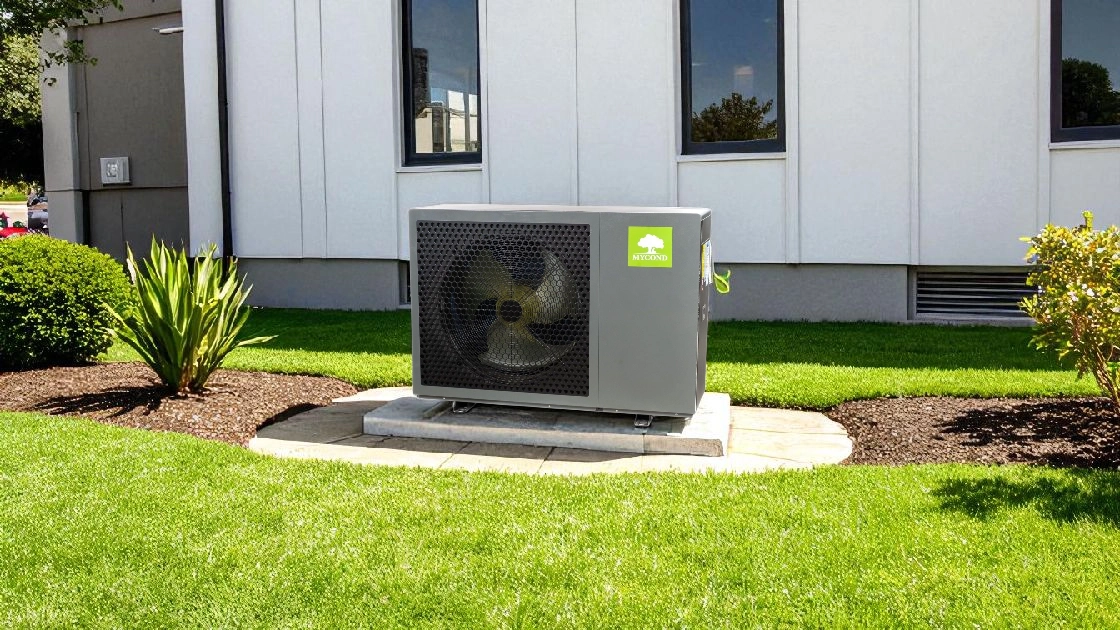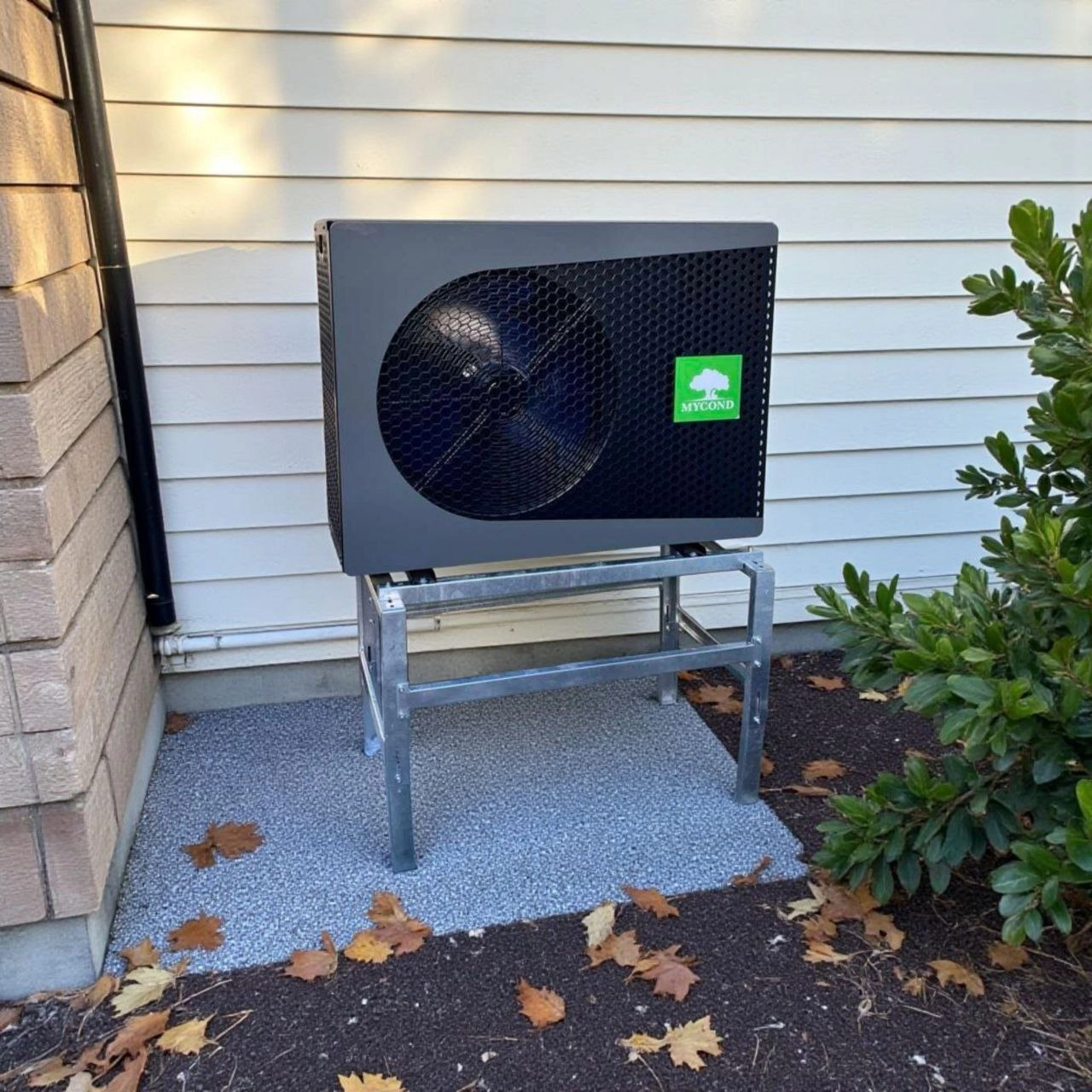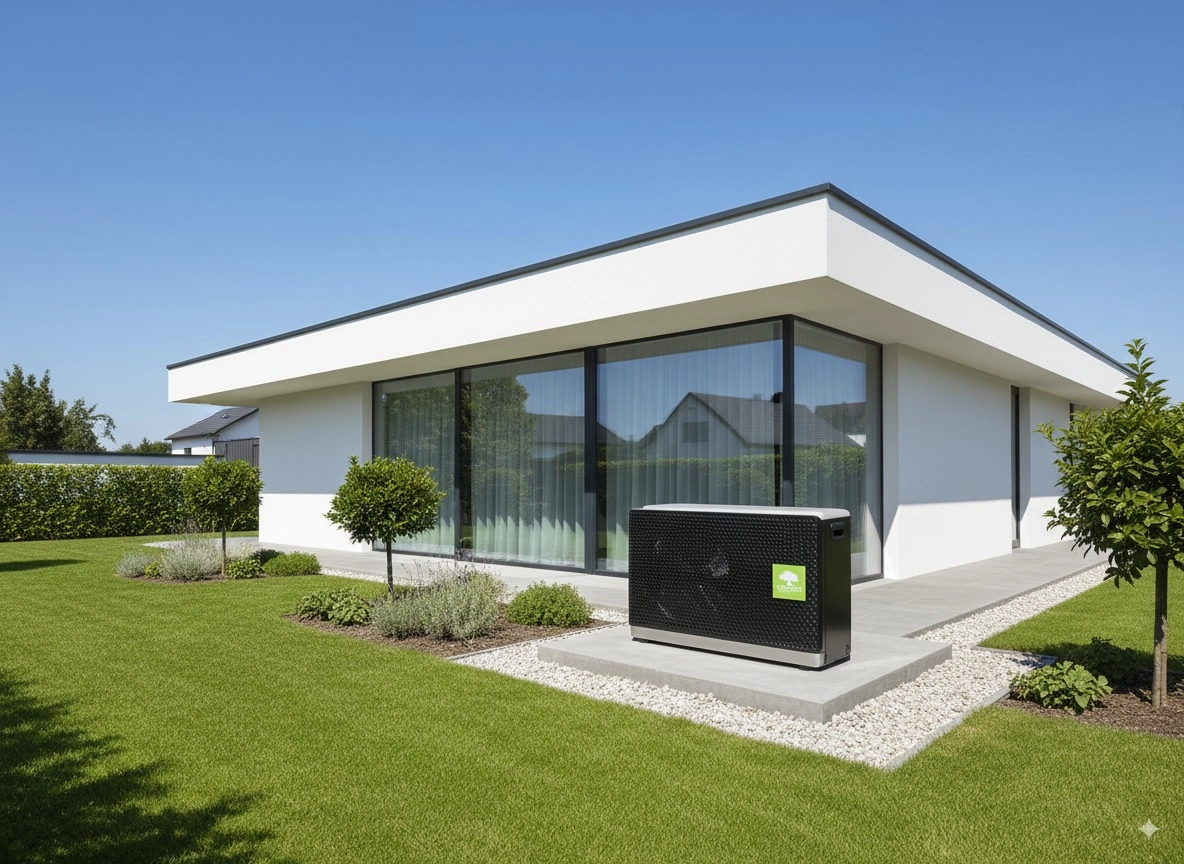
COP 4.9 means a heat pump delivers 4.9 kW of heat for every 1 kW of electricity consumed by transferring free heat from the air. This is 4–5 times more economical than an electric boiler — not magic, but physics.
Introduction: a typical choice scenario
Imagine this: a homeowner considers replacing a 12 kW electric boiler that has become uneconomical due to rising electricity tariffs. While searching for alternatives, he comes across a BeeEco heat pump with similar capacity and a COP of 4.85. The description states this can save up to 80% of electricity.
"But how is this possible? — the owner wonders. — Does a COP of 4.85 mean the pump uses 4.85 times less electricity to deliver the same heat? That sounds like magic or a marketing trick." Exactly this misunderstanding makes many buyers skeptical about the benefits of heat pumps.
In reality, understanding the COP is the key to making an informed choice of a heating system and realistically assessing potential savings.
What is COP: an explanation without formulas
COP (Coefficient of Performance) of a heat pump is the ratio of heat energy delivered to the electrical energy consumed. Simply put, COP shows how many kilowatts of heat you get from each kilowatt of electricity.
If the Mycond BeeEco heat pump has a COP of 4.85, it means that for every 1 kW of electricity consumed, the system outputs 4.85 kW of heat. But where does the additional energy come from? This is not a violation of the laws of thermodynamics, but the principle of transferring heat from the surrounding environment.
An analogy helps: a heat pump is not a heater, but a "heat transporter." Imagine a truck that spends 1 liter of fuel (1 kW of electricity) to carry 4.85 tons of cargo (4.85 kW of heat). The cargo is heat from the air, which contains a lot of thermal energy even at sub-zero temperatures. The fuel (electricity) is spent only on operating the "vehicle" (the compressor) that moves this heat into your home.

How a heat pump works: the physical principle
To understand what drives the efficiency of a heat pump, it’s worth looking at its physical principle. A heat pump operates on the same cycle as a refrigerator but with the opposite goal — not to cool, but to heat.
The operating cycle of a heat pump consists of four main stages:
- Evaporator (outdoor unit): the refrigerant circulating in the system has a temperature lower than the outdoor air. Due to the temperature difference, the refrigerant absorbs heat from the air and evaporates. It’s important to note that even at -25°C, air still contains enough thermal energy.
- Compressor: the gaseous refrigerant is compressed, which raises its temperature to +55–75°C (depending on the model). Electricity is consumed to power the compressor.
- Condenser (indoor unit): the hot gas transfers heat to the water in the heating system and condenses back into a liquid.
- Expansion valve: the liquid refrigerant passes through the valve, where its pressure drops sharply, causing cooling. The refrigerant then returns to the evaporator and the cycle repeats.
Key point: the compressor uses electricity not to generate heat, but to transfer (pump) heat from the environment. This is fundamentally different from an electric boiler, where electricity is directly converted into heat.
Different Mycond heat pump models use various technologies to achieve high efficiency:
- BeeEco: Highly rotary compressor, R290 refrigerant, operating range from -25°C to +45°C.
- BeeSmart: Mitsubishi compressor, R32 refrigerant, inverter technology for smooth power modulation.
- BeeThermic: Panasonic compressor with EVI technology to ensure high supply temperatures even at low outdoor air temperatures.
Electric heating: direct energy conversion
To better understand the advantages of a heat pump, consider how electric heating works. Electric boilers and convectors operate on the principle of directly converting electrical energy into thermal energy.
When electric current passes through a heating element (TEN or coil), it encounters resistance that converts electrical energy into heat. According to the law of conservation of energy, 1 kW of electricity is converted into approximately 1 kW of heat (with minimal losses). Therefore, electric heating has a COP close to 1.0.
Although the efficiency of an electric boiler can reach 98–99%, this only refers to the conversion efficiency inside the device. The "input electricity : output heat" ratio always remains close to 1:1. Electric heating cannot deliver more heat energy than the electrical energy it consumes.
It’s important to understand: electric heating is not a bad technology; it just operates on a different physical principle. It does not transfer heat from outside like a heat pump does, but generates it directly from electricity.
Comparison: 1 kW of electricity = ? kW of heat
To clearly illustrate the difference between a heat pump and electric heating, let’s compare how much heat 1 kW of electricity delivers in different heating systems:
| Equipment type | Mycond series/model | COP/SCOP | Compressor | Heat obtained from 1 kW of electricity | Energy efficiency class |
|---|---|---|---|---|---|
| Electric boiler/convector | - | 1.0 | no compressor | 1 kW of heat | - |
| "Air-to-water" heat pump | BeeEco | 4.8-4.9 | Highly (rotary) | 4.8-4.9 kW of heat | A+++ |
| "Air-to-water" heat pump | BeeSmart | 4.3-4.78 | Mitsubishi | 4.3-4.78 kW of heat | A+++ |
| "Air-to-water" heat pump | BeeHeat | 4.41-4.89 | Mitsubishi | 4.41-4.89 kW of heat | A+++ |
| "Air-to-water" heat pump | MBasic | 4.0-4.3 | Zhuhai Landa | 4.0-4.3 kW of heat | A+++ |
| "Air-to-water" heat pump | BeeThermic W35 | 4.3-4.9 | Panasonic EVI | 4.3-4.9 kW of heat | A+++ |
| "Air-to-water" heat pump | BeeThermic W55 | 3.2+ | Panasonic EVI | 3.2+ kW of heat | A++ |
Key takeaway: a heat pump delivers 3.2–4.85 times more heat per kW of electricity than direct electric heating. This means that for the same heating demand, a heat pump consumes 3.2–4.85 times less electricity.

What affects COP: temperature and operating mode
The COP is not a constant — it varies depending on operating conditions. Understanding the factors that influence COP will help you correctly assess a heat pump’s efficiency in your particular situation.
Outdoor air temperature significantly affects COP:
- At +7°C (denoted A7): COP is highest, because warmer air contains more thermal energy that is easier to "collect."
- At -7°C (A-7): COP decreases since colder air has less thermal energy and the compressor has to work harder.
- At -25°C: COP reaches minimum values, but even then remains above 1.0.
For example, the Mycond MBasic heat pump shows the following figures:
- COP at A7/W35: 4.0–4.3
- COP at -7°C: 2.6–2.9
This means that even in severe frost, a heat pump remains 2.6–2.9 times more efficient than an electric boiler.
Supply water temperature in the heating system also significantly affects COP:
- W35 (underfloor heating, 35°C): higher COP due to the smaller temperature difference between the refrigerant and the water.
- W55 (radiators, 55°C): lower COP because the compressor must work harder to reach higher temperatures.
Example: the Mycond BeeThermic heat pump shows a SCOP of 4.58 when operating with underfloor heating (W35) and 3.28 with radiators (W55).
To boost efficiency at high supply temperatures and low outdoor temperatures, some models, such as the Mycond BeeThermic, use EVI (Enhanced Vapor Injection) technology. This allows the Panasonic compressor to maintain high efficiency even in challenging conditions.
SCOP vs COP: seasonal efficiency
When choosing a heat pump, it’s important to distinguish between COP and SCOP, as they reflect system efficiency differently:
COP (Coefficient of Performance) is the instantaneous performance coefficient measured under specific conditions, for example, A7/W35 (air temperature +7°C, outlet water temperature 35°C). COP shows efficiency at a specific moment under set conditions.
SCOP (Seasonal Coefficient of Performance) is the weighted-average performance over the entire heating season. SCOP accounts for efficiency changes depending on seasonal outdoor temperature fluctuations and different operating modes.
SCOP is a far more important indicator for assessing annual savings because it reflects real efficiency throughout the season rather than only under ideal test conditions.
Examples of seasonal efficiency for Mycond heat pumps:
- BeeSmart: SCOP 4.72–4.98 — among the highest on the market, ensuring substantial savings throughout the heating season.
- MBasic: SCOP 4.50–4.65 — stable 4.5–4.65x savings versus an electric boiler across the season.
When choosing a heat pump, focus on SCOP, as this metric provides the most realistic picture of system performance in your climate region.
Savings calculation: comparison methodology
To understand the real savings when using a heat pump compared to electric heating, you can apply a simple calculation methodology. Here’s what you need to know to estimate savings for your home:
Input data for calculation:
- House area and design heating capacity (typically 80–120 W per m² depending on insulation level)
- Duration of the heating season in your region (number of days)
- Average operating power of the system (usually 40–60% of maximum thanks to inverter modulation)
- Your electricity tariff
Formula for calculating electricity consumption:
For an electric boiler (COP = 1.0):
Consumption = Power × Operating hours per day × Number of season days
For a heat pump:
Consumption = (Power × Operating hours per day × Number of season days) ÷ average SCOP
Let’s consider an example methodology (without specific pricing):
A 150 m² house, with a calculated peak heating capacity of 12 kW. On average the system runs at 50% power, i.e., 6 kW. The heating season lasts 200 days, and the system runs actively 12 hours per day.
An electric boiler consumes:
6 kW × 12 h × 200 days = 14,400 kWh per season
Mycond MBasic heat pump (average SCOP 4.5) consumes:
14,400 ÷ 4.5 = 3,200 kWh per season
Electricity savings:
14,400 - 3,200 = 11,200 kWh per season
To calculate monetary savings, multiply the saved kilowatt-hours (11,200) by your tariff. That will be your annual savings.
Important notes:
- Real SCOP depends on your regional climate (the colder it is, the lower the SCOP)
- BeeEco with a COP of 4.8–4.9 provides 8–9% more savings than MBasic
- BeeSmart with a SCOP of 4.72–4.98 is one of the most efficient options
- These calculations include only operating costs, not initial investments
For an accurate payback calculation that includes initial investment and your local conditions, contact Mycond engineers — they will help you select the optimal model and calculate real savings for your specific case.
When COP won’t save you: limitations of heat pumps
While heat pumps perform excellently in most situations, there are circumstances where their advantages may be less apparent. An honest look at limitations helps you make a balanced decision:
Older homes with high heat losses: If a house has poor insulation and requires high supply temperatures (W65–W75), the COP of a heat pump can drop to 2.5–3.0. Although this is still better than an electric boiler, the savings will be less impressive.
Extremely cold climates: At temperatures below -25°C, most heat pumps operate with limited efficiency. Although Mycond BeeEco models are designed to work down to -25°C, their COP decreases at such temperatures.
No space for an outdoor unit: In apartments without a balcony or with no available outdoor area, installing an outdoor unit can be difficult.
Limited budget: Upfront investment for a heat pump is higher than for an electric boiler. Although savings in operation typically pay back the investment in 3–5 years, not everyone can afford a larger upfront cost.
However, even at a COP of 2.5–3.0 in challenging conditions, a heat pump is still 2.5–3.0 times more economical than an electric boiler. In most cases, the advantages of heat pumps outweigh their limitations.

COP measurement methodology: standards EN 14511 and EN 14825
A common question is how reliable the COP values declared by manufacturers are. To reassure skeptics, it’s useful to understand how these figures are measured.
Heat pump efficiency metrics are not marketing inventions — they are measured according to strict European standards:
EN 14511 is the standard for measuring COP under fixed conditions. It defines exact test conditions (e.g., A7/W35, A-7/W35), methods for measurements and COP calculations. During testing, actual electrical power consumption and thermal output delivered to the heating system are measured.
EN 14825 is the methodology for calculating seasonal efficiency (SCOP) for different European climate zones. The standard accounts for variable operating conditions throughout the heating season, providing a more realistic annual efficiency assessment.
Heat Pump Keymark is an independent quality certification confirming that the declared characteristics of heat pumps are accurate. All Mycond heat pump series (BeeEco, BeeSmart, BeeThermic, MBasic) have been tested according to these standards.
Thus, the COP in the equipment datasheet is not an advertising figure, but the result of standardized laboratory tests. Mycond series BeeEco, BeeSmart, BeeThermic, and MBasic have passed testing per EN 14511 and EN 14825, confirming the validity of the declared specifications.
Inverter technology and its impact on efficiency
Another factor that significantly affects real heat pump efficiency is the compressor type. Modern heat pumps use inverter technology that markedly increases energy efficiency.
Conventional (non-inverter) compressors operate on an "on/off" principle. When indoor temperature drops below the setpoint, the compressor turns on and runs at full power until the temperature rises above the setpoint, then turns off. These cycles cause peak electricity consumption at startup and unstable indoor temperatures.
Inverter compressors can smoothly modulate power from 20% to 110%, maintaining stable temperatures without frequent starts/stops. When less heat is needed, the compressor runs at reduced power rather than shutting off completely, which lowers peak loads and boosts efficiency.
All Mycond heat pump series (BeeEco, BeeSmart, BeeThermic, MBasic, BeeHeat) use inverter technology, which further raises real seasonal SCOP by 15–25% compared to older non-inverter systems. This means a heat pump is not only more efficient due to its operating principle, but also optimizes consumption based on current heating demand.
Alternative refrigerants: R32 vs R290
The type of refrigerant used in a heat pump also affects its efficiency. Different refrigerants have different thermodynamic properties, which impact the system’s COP.
R32 is a modern refrigerant used in Mycond BeeSmart, BeeHeat, BeeThermic, and MBasic heat pumps. It has a relatively low global warming potential (GWP), good efficiency, and is non-flammable, making it safe to use.
R290 (propane) is a natural refrigerant used in Mycond BeeEco heat pumps with a Highly compressor. Propane has zero global warming potential and excellent thermodynamic properties, enabling a higher COP. However, due to the flammability of R290, it is used only in monoblock systems, where all refrigerant is contained in the outdoor unit, enhancing operational safety.
Thanks to the ideal properties of propane as a refrigerant and the optimized design of the rotary compressor, the BeeEco heat pump reaches an impressive COP of 4.85. This makes it one of the most efficient heat pumps on the market.
Comparison table: choose by COP and conditions
To make it easier to choose the optimal heat pump model for specific conditions, here is a comparative table of Mycond series:
| Mycond series | Type | COP/SCOP | Compressor | Refrigerant | Optimal heating system | Minimum operating temperature | Features |
|---|---|---|---|---|---|---|---|
| BeeEco | monoblock | 4.8-4.9 | Highly (rotary) | R290 | radiators/underfloor heating/fan coils | -25°C to +45°C | maximum COP, natural refrigerant, up to +75°C supply |
| BeeSmart | split | 4.3-4.78 | Mitsubishi | R32 | underfloor heating/low-temperature radiators | -25°C to +43°C | high COP, cascade up to 9 units |
| BeeHeat | split | 4.41-4.89 | Mitsubishi | R32 | universal | -25°C to +43°C | reliable Mitsubishi compressor, cascade up to 9 units |
| BeeThermic | monoblock | 4.3-4.9 (W35) | Panasonic EVI | R32 | high-temperature radiators/retrofit | down to -25°C | EVI technology, up to +60°C supply |
| MBasic | monoblock | 4.0-4.3 | Zhuhai Landa | R32 | underfloor heating/radiators | -25°C to +43°C | optimal price/quality ratio |
This table will help you quickly compare key characteristics of different Mycond heat pump series and choose the model that best suits your conditions.

Common mistakes and myths about COP
There are many misconceptions about heat pumps and their efficiency. Let’s dispel the most common myths:
Myth 1: "COP 4.85 = 485% efficiency"
No, this doesn’t violate the laws of physics. COP is not efficiency; it is a coefficient of heat transfer. A heat pump does not create energy; it moves it from the environment, using electricity only to power the compressor.
Myth 2: "The higher the COP, the better"
Not always. A high COP under standard conditions (A7/W35) can drop significantly at low temperatures (-15°C) or at high supply water temperatures (W55). It’s more important to choose a heat pump with stable COP under the conditions in which it will mainly operate in your region.
Myth 3: "Heat pumps don’t work in winter"
Modern heat pumps operate efficiently even at very low temperatures. Although COP decreases in severe frost, even a COP of 2.5 at -20°C means a heat pump is still 2.5 times more economical than an electric boiler.
Myth 4: "The COP in the datasheet is marketing lies"
No, COP is measured according to standardized methods EN 14511 and EN 14825. The results of these tests are objective and comparable across manufacturers.
FAQ
What is COP and how should I understand it?
COP (Coefficient of Performance) is the performance coefficient of a heat pump that shows the ratio of heat energy delivered to electrical energy consumed. If COP = 4.85, it means the system delivers 4.85 kW of heat for every 1 kW of electricity used.
Why is COP greater than 1 if efficiency cannot exceed 100%?
COP is not efficiency in the classical sense. A heat pump does not generate heat; it transfers it from the environment. Electricity is used only to operate the compressor that pumps heat, not to produce it.
How much does a heat pump really save compared to an electric boiler?
On average, a heat pump consumes 3–5 times less electricity than an electric boiler to provide the same level of heating. Exact savings depend on climate zone, house type, heating system, and heat pump model.
Does a heat pump work in winter at -20°C?
Yes, modern Mycond heat pumps operate efficiently down to -25°C. At low temperatures COP decreases, but remains significantly above 1.0, making a heat pump still more economical than an electric boiler.
What’s better: a high COP at A7/W35 or stable performance at low temperatures?
It depends on your regional climate. If you live in a mild climate where it rarely drops below -7°C, a high COP at A7/W35 matters more. If your region has cold winters with temperatures below -15°C, choose a model with stable COP at low temperatures, such as BeeThermic with EVI technology.
How can I verify that the manufacturer hasn’t inflated the COP?
Look for certificates of compliance with European standards EN 14511, EN 14825, and the Heat Pump Keymark. Also, the ability to verify specifications on official certification bodies’ websites is a reliable confirmation.
Can an electric boiler be more cost-effective than a heat pump?
In some cases — yes. For example, if the house is used infrequently (a weekend cottage), if the house has very poor insulation and requires high supply temperatures, or if your region has especially low electricity tariffs. However, in most cases a heat pump will be more economical in the long run.
Conclusion
Understanding the COP principle is key to choosing between a heat pump and electric heating. A heat pump does not violate the laws of physics; it simply uses free energy from the surrounding air, consuming electricity only to transfer it.
A COP of 4.0–4.9 means real savings of 4–5 times compared to an electric boiler — this is a physical fact, not a marketing trick. Even in the harshest winter conditions, a heat pump remains more economical than direct electric heating.
Each Mycond heat pump series is optimized for specific operating conditions — from BeeEco with a record COP of 4.85 to BeeThermic with EVI technology for stable operation at low temperatures.
Want to know the exact savings for your home? Mycond engineers will select the optimal model with the highest COP for your specific conditions and calculate real savings. Leave a request on the Mycond website and take the first step toward economical and eco-friendly heating!